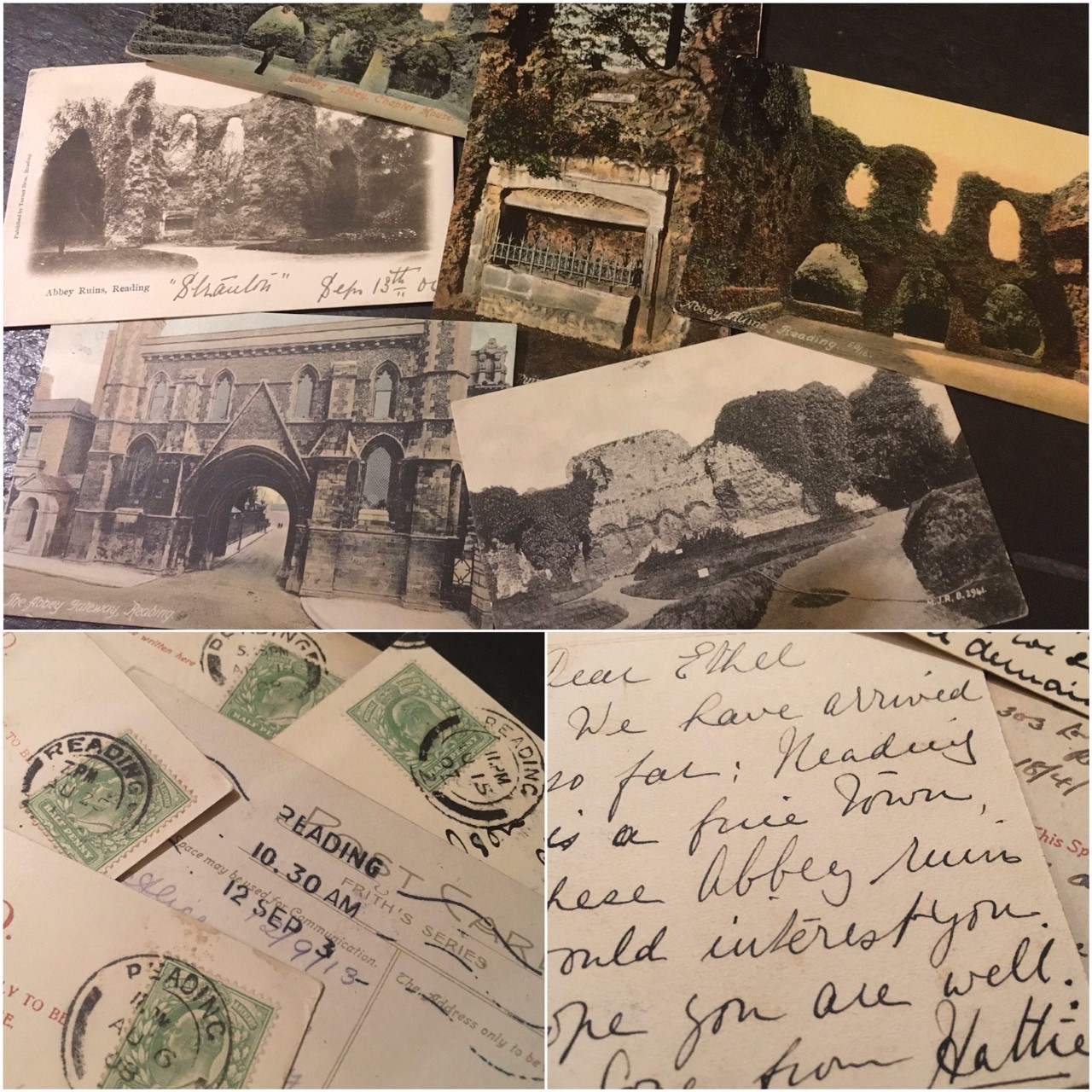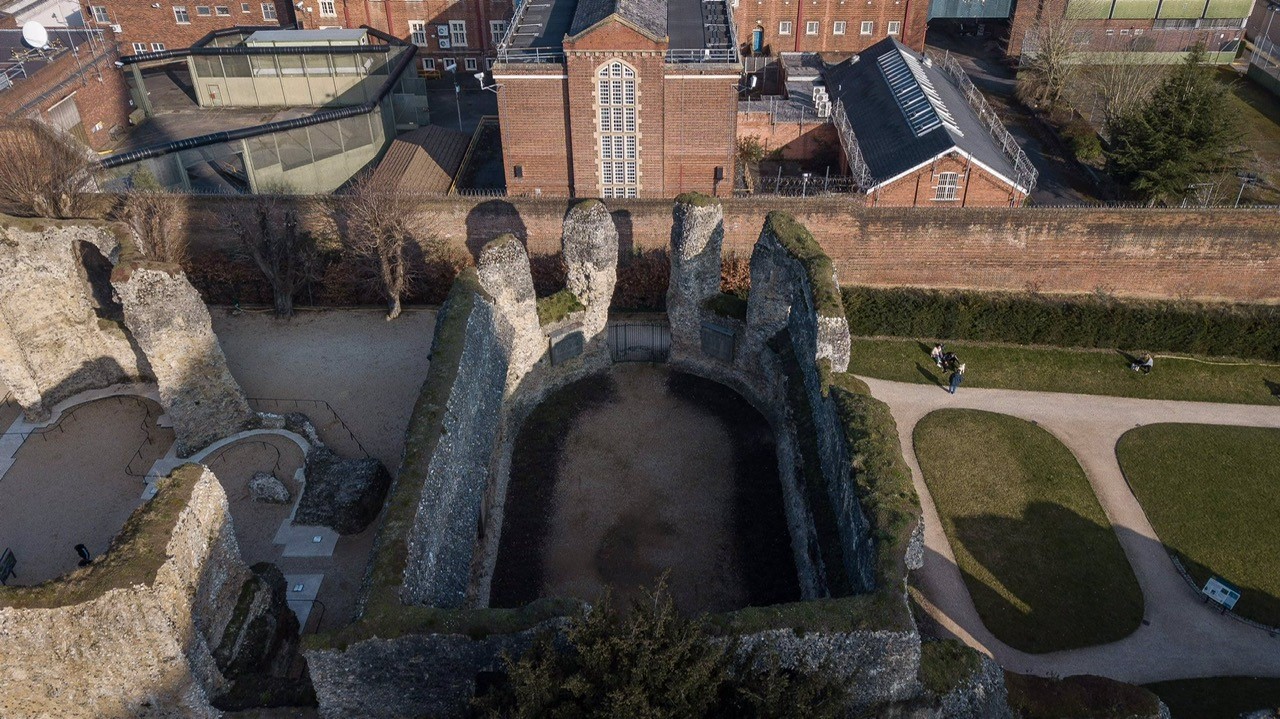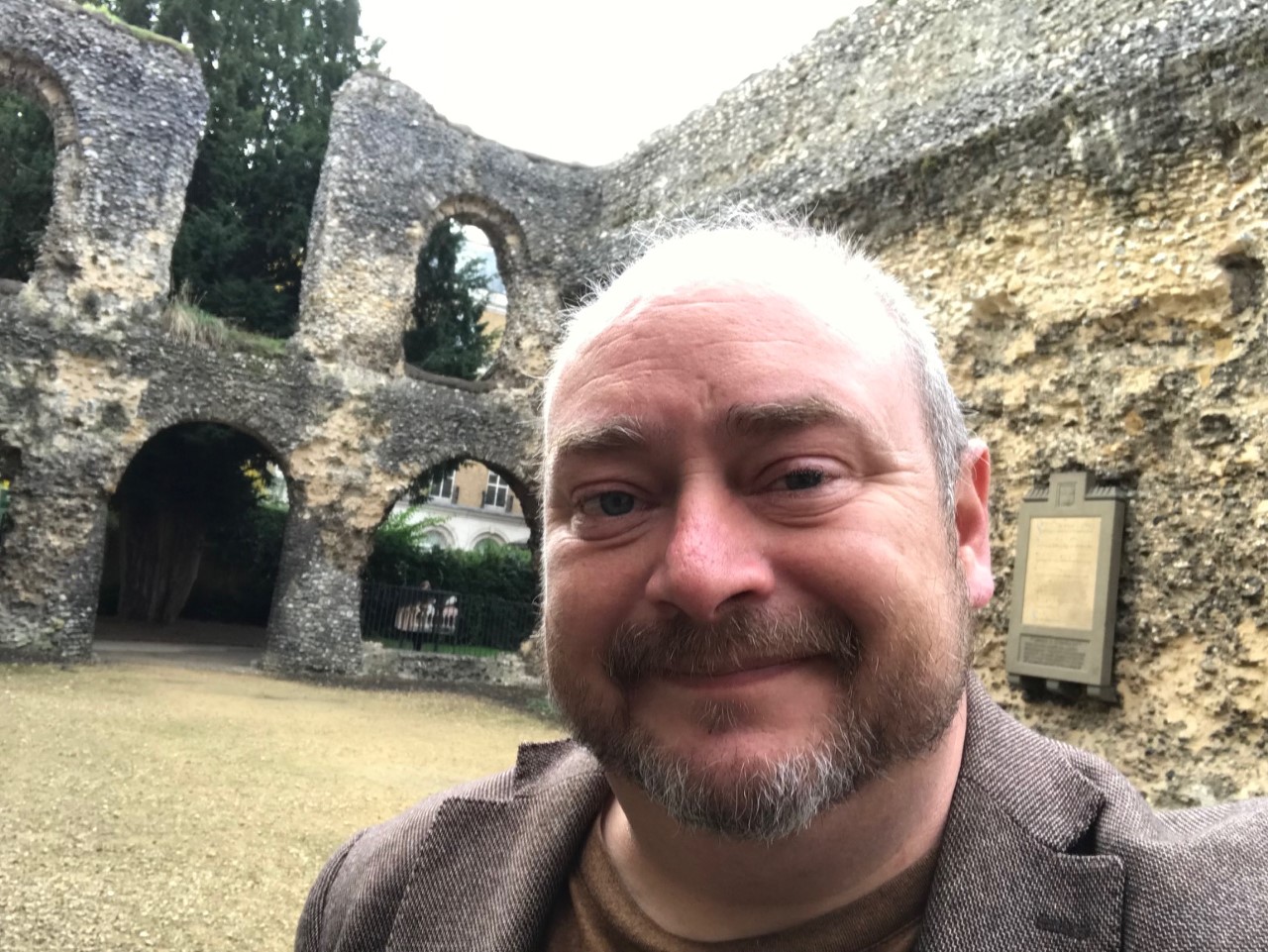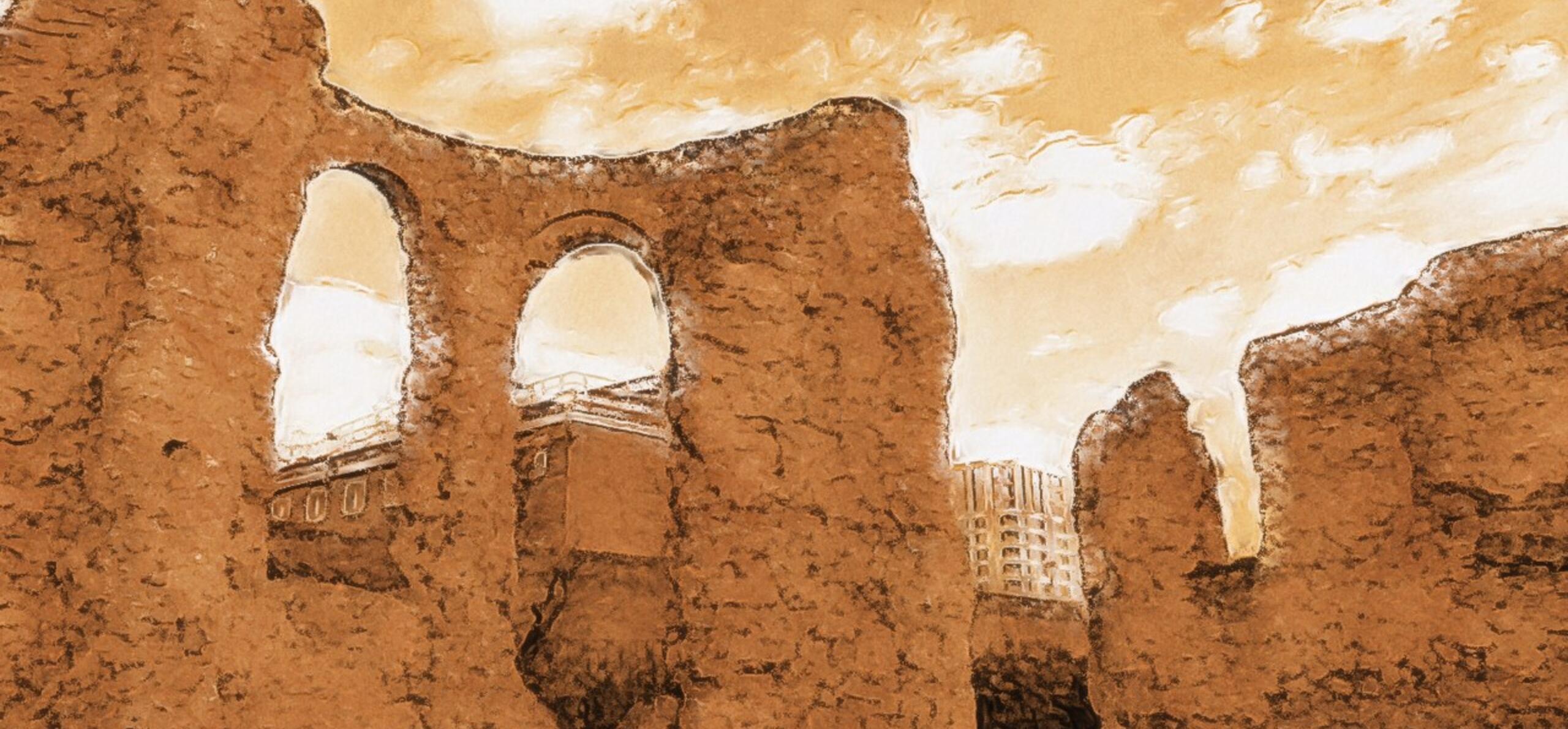Blog and original artwork by David Cook.
Some 900 years have passed since the first foundation stone of Reading Abbey was laid. In essence, what was once an impressive mausoleum for a Norman king became so much more, as time kept its steady pace.
I’ve never tired of exploring the abbey ruins. I must have studied every flint and remaining facing stone with each visit, always finding something new. That enthusiasm increased, when in 2018, after nearly a decade of vital consolidation work to ensure preservation of this scheduled monument, the ruins were reopened to the public to enjoy again.
The anniversary year of 2021 offered an opportunity for us all to celebrate Reading Abbey as never before. That marvellously skeletal plot of land is literally, the bare bones of history. Not just of kings, abbots and monks, but of the countless generations of people who’ve visited and paused within its grounds, whether seeking rest and contemplation, or inspiration and understanding.
My personal celebration of this occasion was in turning my Twitter account over to posting a daily entry about the abbey’s history during that important year, under the banner of ‘900 Years of Reading Abbey.’ I initially envisaged nothing more than posting a photo a day from the site, to accompany a fact about the grounds or mark an important date in the historical calendar, if only for my own satisfaction. Little did I expect how this would develop, or the response it would receive, and alliances made.
Voices from the past
In carrying out research, it became apparent that a wealth of material about Reading Abbey had been produced by writers and artists across the centuries. After the dust settled following both the Dissolution of the Monasteries and the English Civil War, the remnants of the abbey grounds became a draw for the likes of the famous antiquarian William Stukeley and renowned artist John Constable.
From the eighteenth century onwards, with the publication of Sir Henry Englefield’s survey of the abbey, the scholars that followed in his footsteps spoke with greater frequency and authority on the abbey’s history and function. The Reverend Charles Coates, John Man, Charles MacFarlane, the prolific Dr Jamieson Boyd Hurry, all had much to say on the matter, with social media proving the ideal tool to quote from their words and bring these voices from the past into the current day, to a potential worldwide audience.
Even the voices of those just passing by were carried through time. 'Reading is a fine town', wrote Hattie to her friend Ethel in 1910, 'these Abbey ruins would interest you'. On 25th August that year, the postcard bearing a picture of the Abbey Dormitory left the post office in Reading, winging its way to Hampton Hill in Middlesex, which no doubt delighted Ethel when it arrived. Some 110 years later, that same postcard returned to Reading, along with a selection of others featuring this historical site, postmarked from the town.

The modern history of the abbey ruins, one postcard at a time.
As important as the burial of the founding king or the execution of the last abbot might be in the annals of history, the real heartbeat of this site is knowing that as you walk amongst the ruins, you tread in the footsteps of others who’ve enjoyed their visit here
Allies from the present
As the Twitter posts progressed throughout the year, other social media users got in touch to comment on my findings, pose questions and offer their own thoughts on the history of the abbey, all of which proved encouraging to keep moving forwards.
One comment lamented what might’ve been if Reading Abbey had been left untouched during the Dissolution. Who hasn’t thought this while ambling through the grounds? The raggedness of the ruins tends to invoke a sense of mystery about it. If it were as complete as Bath Abbey or Wells Cathedral, would it have invited the interest of Englefield to carry out a survey in 1779, or the enthusiasm of Dr Hurry to install a sense of civic pride, in conserving what we have left? Where one door closes, another opens, but the mind knows no boundaries.
Contact from Thames Valley Archaeological Services proved encouraging, when they offered to share their findings of the discovery of a medieval tilery in Silver Street, which supplied tiles to the abbey. From that point, what was seemingly a personal project became truly interactive. Berkshire Archaeological Society gave permission to feature photos from Cecil Slade’s 1971-1973 excavation at the Abbey, and local explorer Callum Cromwell supplied some amazing aerial drone shots of the south transept and chapter house.

This striking drone image, depicting the Reading Abbey ruins before Reading Gaol, was taken (and kindly provided) by Callum Cromwell.
As ever, Reading Museum were kindly on hand to assist with queries and requests. Much time was spent in their Story of Reading gallery, drawing inspiration from the treasure trove of abbey finds on display, and Reginald William Ford’s intricately detailed model of the Abbey Quarter, which this year, marks fifty years since it was assembled by the artist. 'The quality of this model is amazing', came one comment from the Netherlands. That it certainly is.
Hope for the future
As the year ended, I found myself reflecting on past celebrations of the abbey’s history. Given the spectacle of the 800th anniversary celebrations in 1920 with the Reading Pageant, I expect Dr Hurry may have wondered how the 900th anniversary would be celebrated. Could he have expected that his words, along with those of other scholars and the depictions of the abbey by artists, would resonate into the next century?
I wonder, with a sense of envy, how Reading will celebrate that amazing millennium milestone 100 years from now. What secrets rest below our feet, waiting to be discovered? Maybe in our own lifetime, new information may come to light. Regardless, I’m thankful that I’ve been able to share my enthusiasm for Reading Abbey at this point in its history.
As time continues its steady pace towards 1,000 years, we can enjoy the freedom of the site today and play our small part in the fabric of its history. I look forward to seeing you out there.
David Cook is a local history enthusiast and writer. He can often be found posting about the town’s history, architecture and music scene on his Twitter.

Here's David in the Reading Abbey ruins, 900 years after its foundation in 1121!





